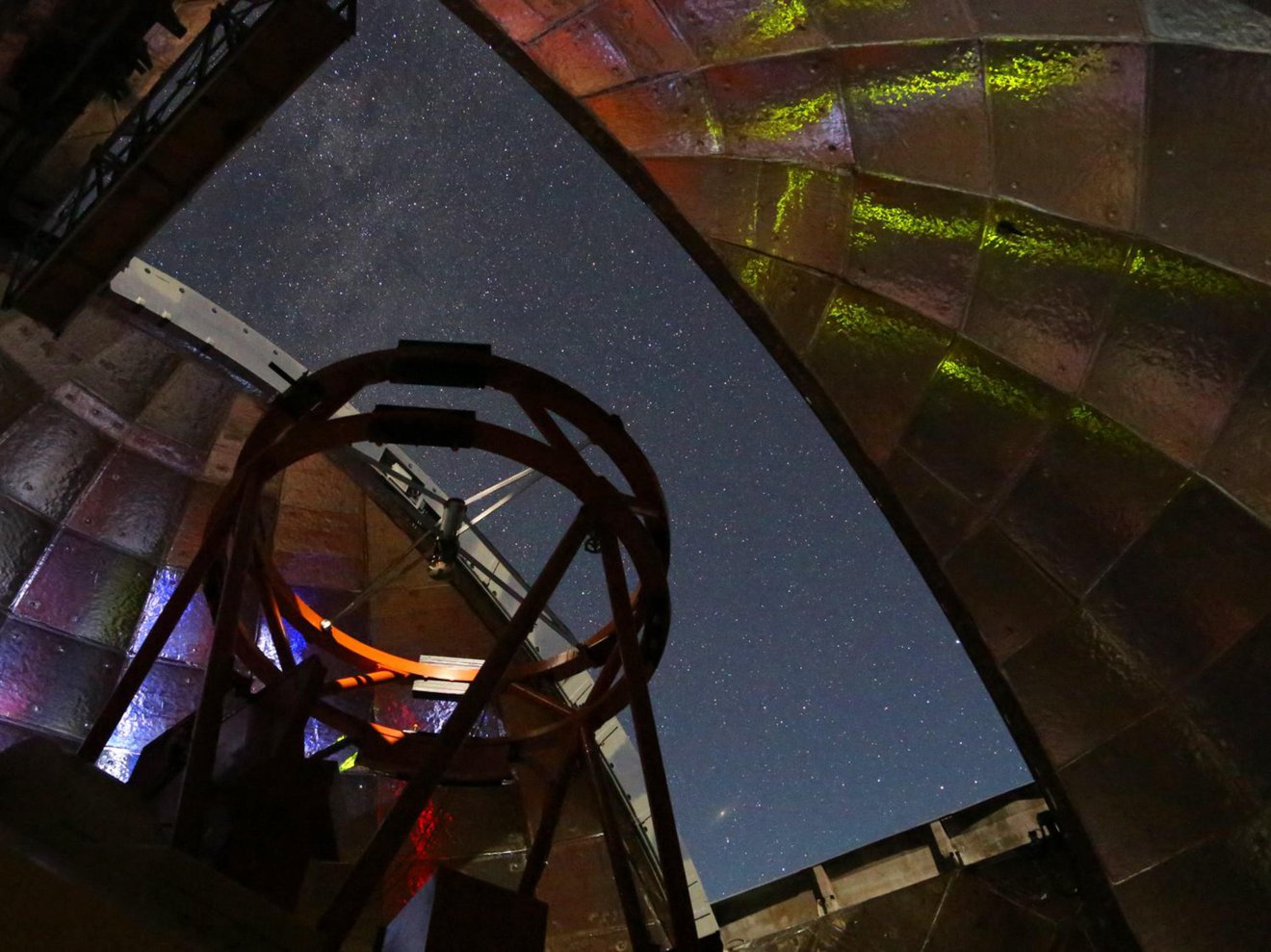The U.S. space agency said the asteroid's approach would allow astronomers to see
The distance at which the asteroid is located is 5.25times the distance from the Earth to the Moon. Yet it's close enough for 2001 FO32 to be classified as a "potentially hazardous asteroid." NASA announced that the object will travel at a speed of about 124 thousand km / h, this speed exceeds that at which most asteroids pass by the Earth.
“Little is known about this object now,therefore, its approach gives scientists a great opportunity to learn a lot about this asteroid, ”explains Lance Banner, chief scientist at NASA's Jet Propulsion Laboratory.
 This photograph shows a view from inside the dome of NASA's Infrared Telescope during nighttime observations.The 3.2-meter telescope atop Mauna Kea in Hawaii will be used to measure the infrared spectrum of asteroid 2001 FO32.photo: UH / IfA
This photograph shows a view from inside the dome of NASA's Infrared Telescope during nighttime observations.The 3.2-meter telescope atop Mauna Kea in Hawaii will be used to measure the infrared spectrum of asteroid 2001 FO32.photo: UH / IfA
Astronomers hope to better understand the size of the asteroid and get a rough idea of its composition by studying the light reflected from the asteroid.When sunlight hits the surface of the asteroid in waves, the minerals in the rocks absorb the minerals in the rocks. some lengths, and reflect others.By reflecting light from the surface, astronomers can measure the chemical signatures of minerals on the surface of an asteroid.
Amateur astronomers in parts of the globe will also be able to see 2001 FO32.The asteroid will be a very bright object in the night sky.
NASA has stated that more than 95% of the approaching Earthasteroids FO32 sized in 2001 or larger have been cataloged, and none have any chance of colliding with our planet within the next century.
After a brief visit in 2001, FO32 will continue its journey, not getting so close to Earth until 2052.
Read more
Uranus has received the status of the strangest planet in the solar system. Why?
Physicists have created an analogue of a black hole and confirmed Hawking's theory. Where it leads?
Abortion and science: what will happen to the children who will give birth